On Feb. 4, over 20 lion dancing groups packed the streets of Chinatown for the “Super Saturday” parade. Amid drumming and cheers, the lion dancers went door to door through businesses in the neighborhood, spreading their blessings and celebrating the new year with the local community. This is one of Chinatown’s largest celebrations during the Lunar New Year, and one that traces far back in time and space.
A dance of lions
A photographer’s encounter with one of the largest Lunar New Year celebrations in New York’s Chinatown.
February 17, 2023
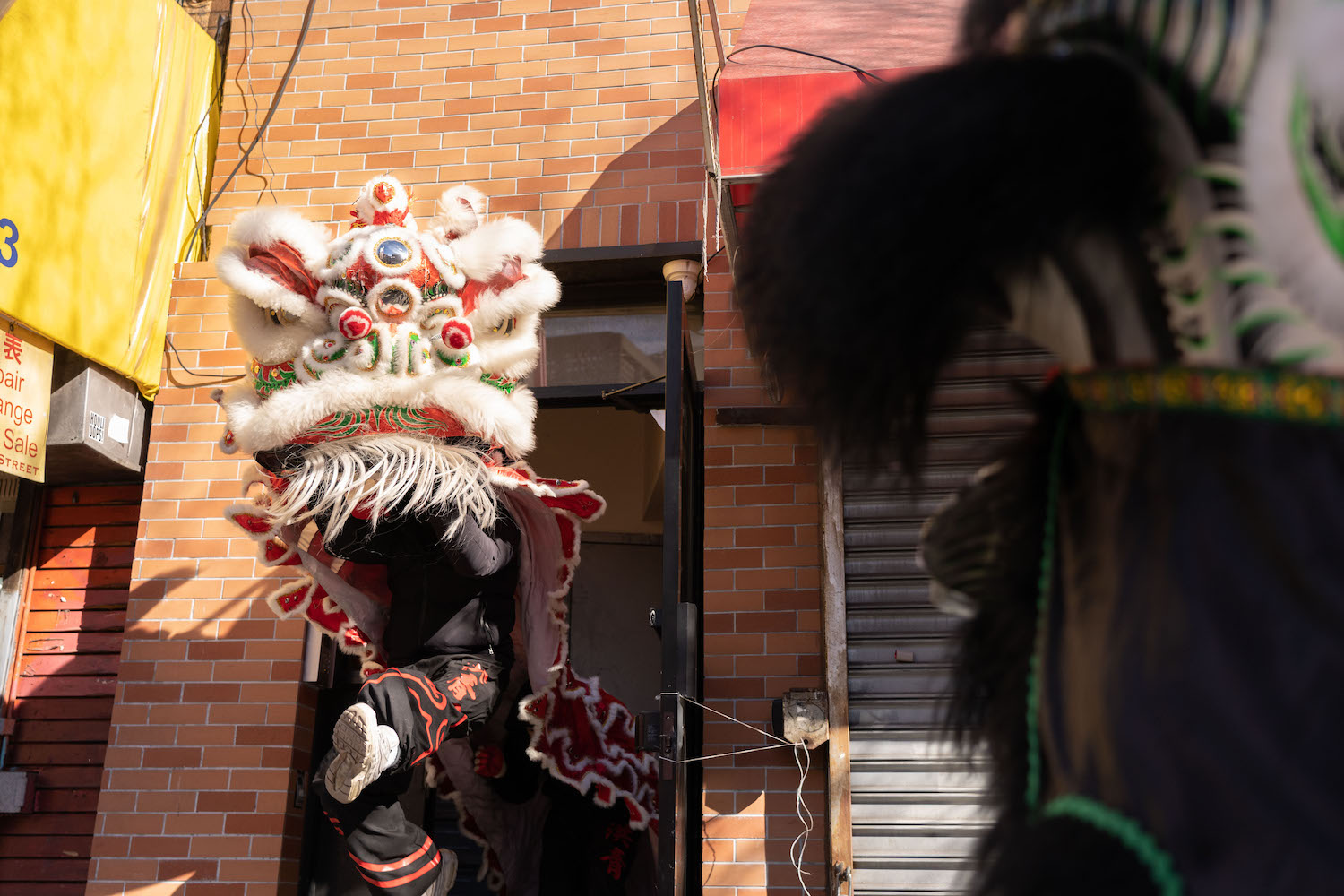
Lion dancing originated in China and later spread to other cultures in East Asia and Southeast Asia. Chinese culture sees the lion as a guardian who drives away evil spirits and brings luck and wealth. Lion dances are prevalent during Lunar New Year, weddings, opening ceremonies and other festive occasions.
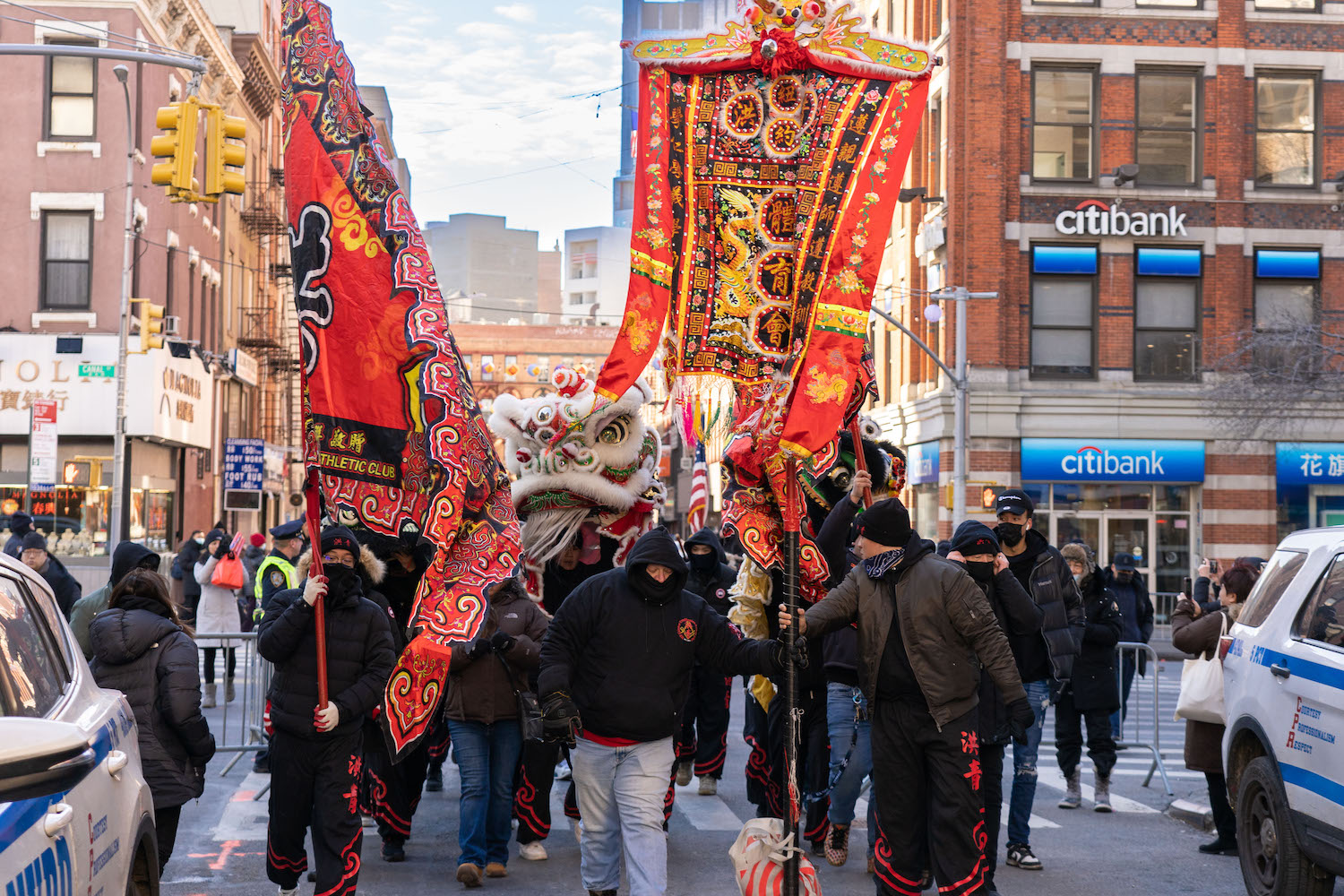
The appearance and the choreography of the lions vary across different regions. The lions seen in New York’s Chinatown follow a tradition known as the “Southern Lion,” which started in Guangdong, China — where some of the earliest Chinese immigrants to the United States came from.

The Southern Lions draw design inspirations from the character masks in traditional Cantonese Opera. The lions are named after characters from the Romance of the Three Kingdoms.
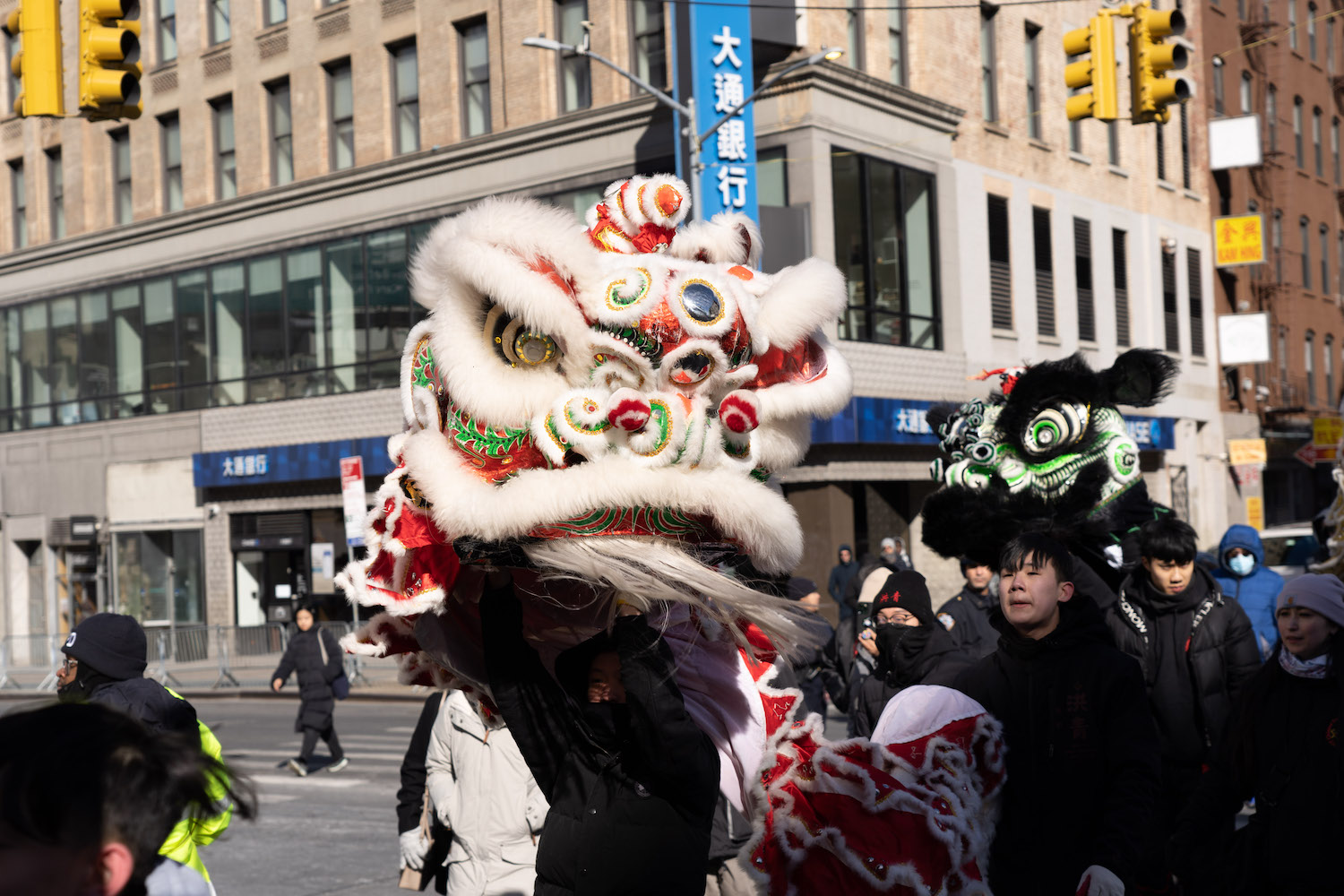
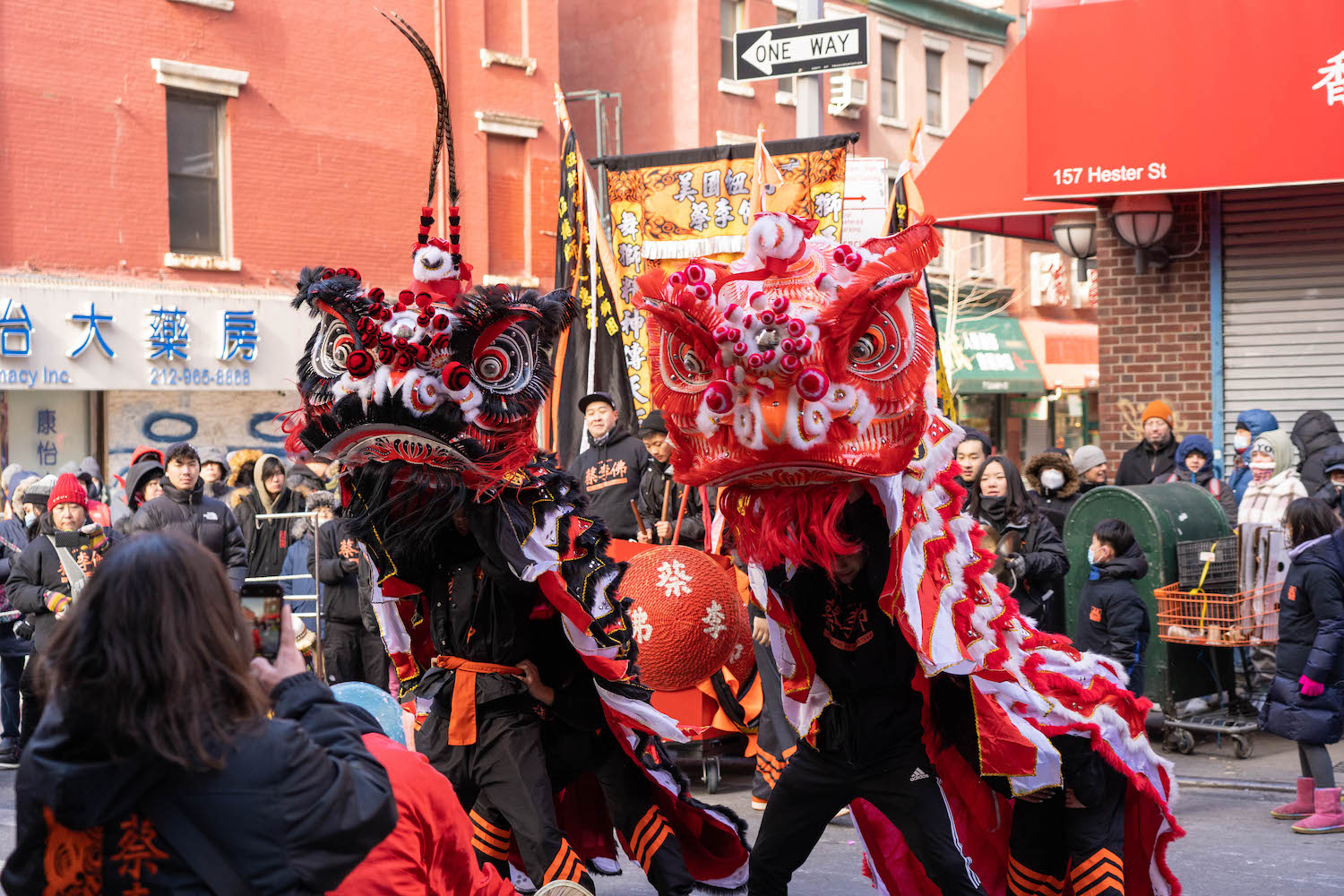
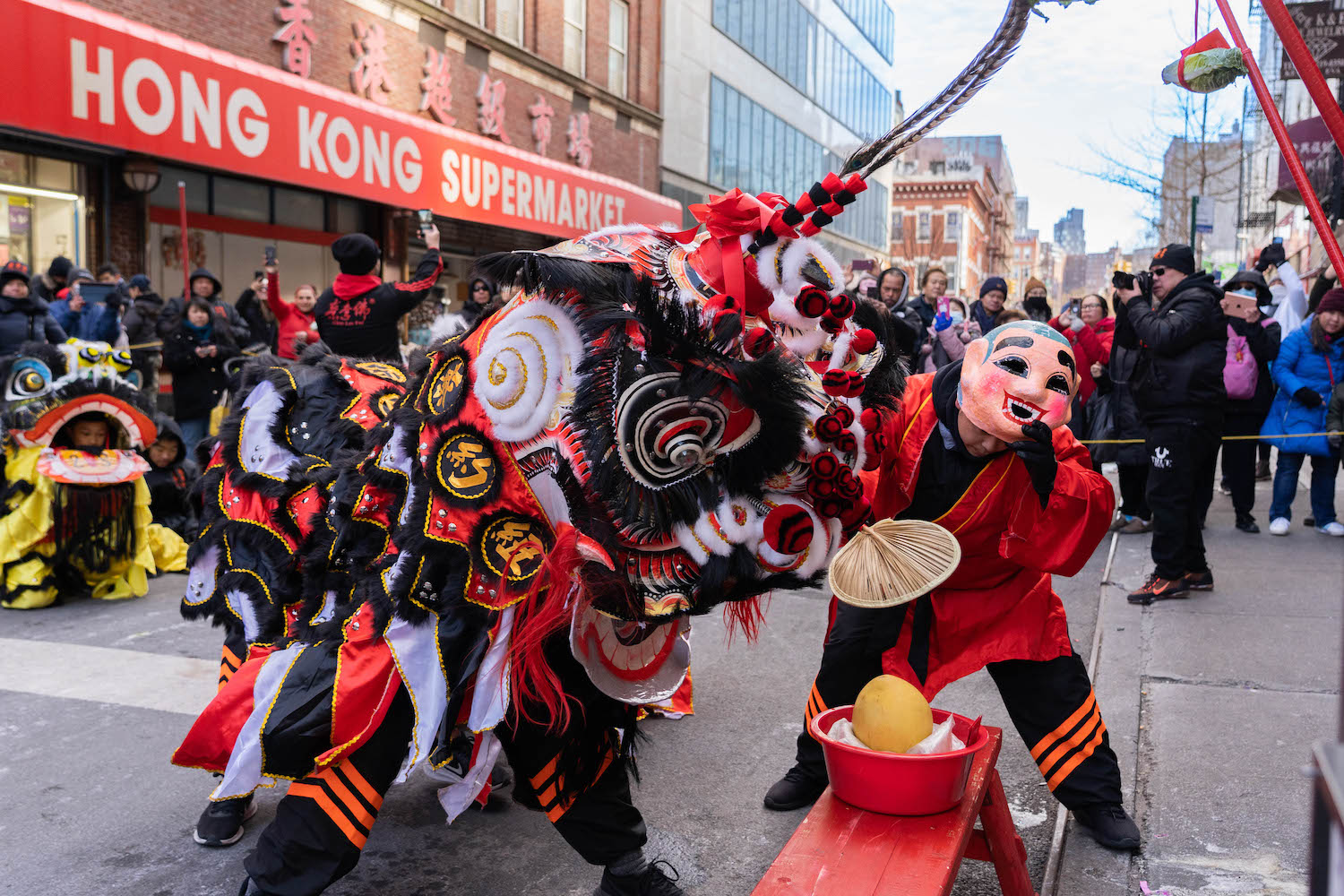
The big-headed Buddha, played by a person with a laughing mask on his head and a cattail fan in his hand, is another popular character in many lion dances. During a performance, the Buddha guides and “plays” with the lion.
During the parade, the lions went into every store in the Chinatown neighborhood, interacting with local store owners. The business owners see the lions as a sign of prosperity and good luck and would, in return, offer a red packet — a symbol that a business that will thrive in the coming year.
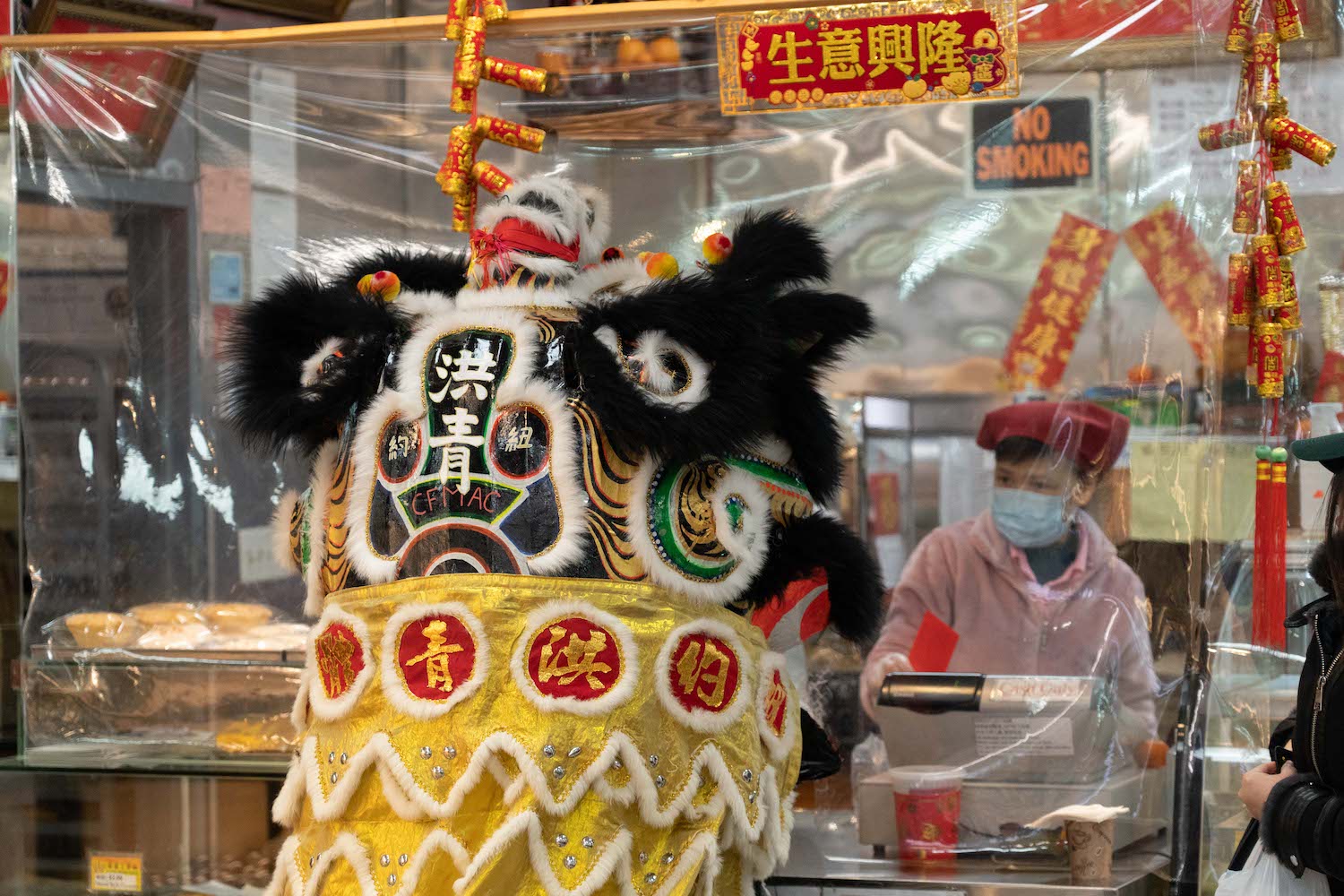
Some businesses hung lettuces and oranges in front of their stores, inviting the lions to “eat” the offerings. In Mandarin, lettuce and oranges are homonyms of “good wealth” and “luck.” After dancing in front of the store, the dancer playing the lion’s tail would lift up the dancer wielding the head. The lion-head dancer would then stand on the shoulder of their partner and take the offerings.
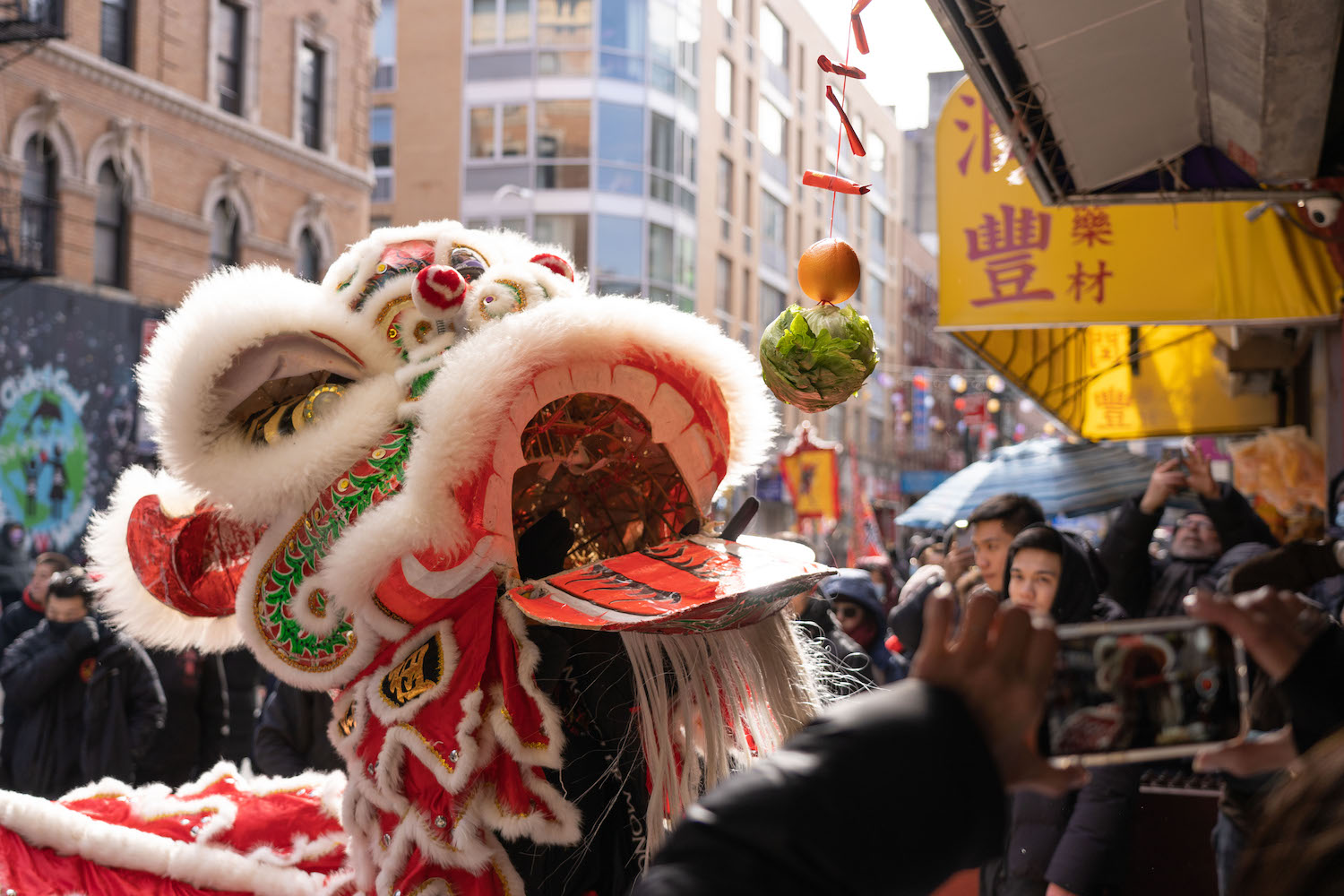
After the lion had “eaten” the lettuce, the dancers would then kick the lettuce toward the storefront. Contrary to common belief, lettuce scattering on the ground means to cover the ground with good fortune.
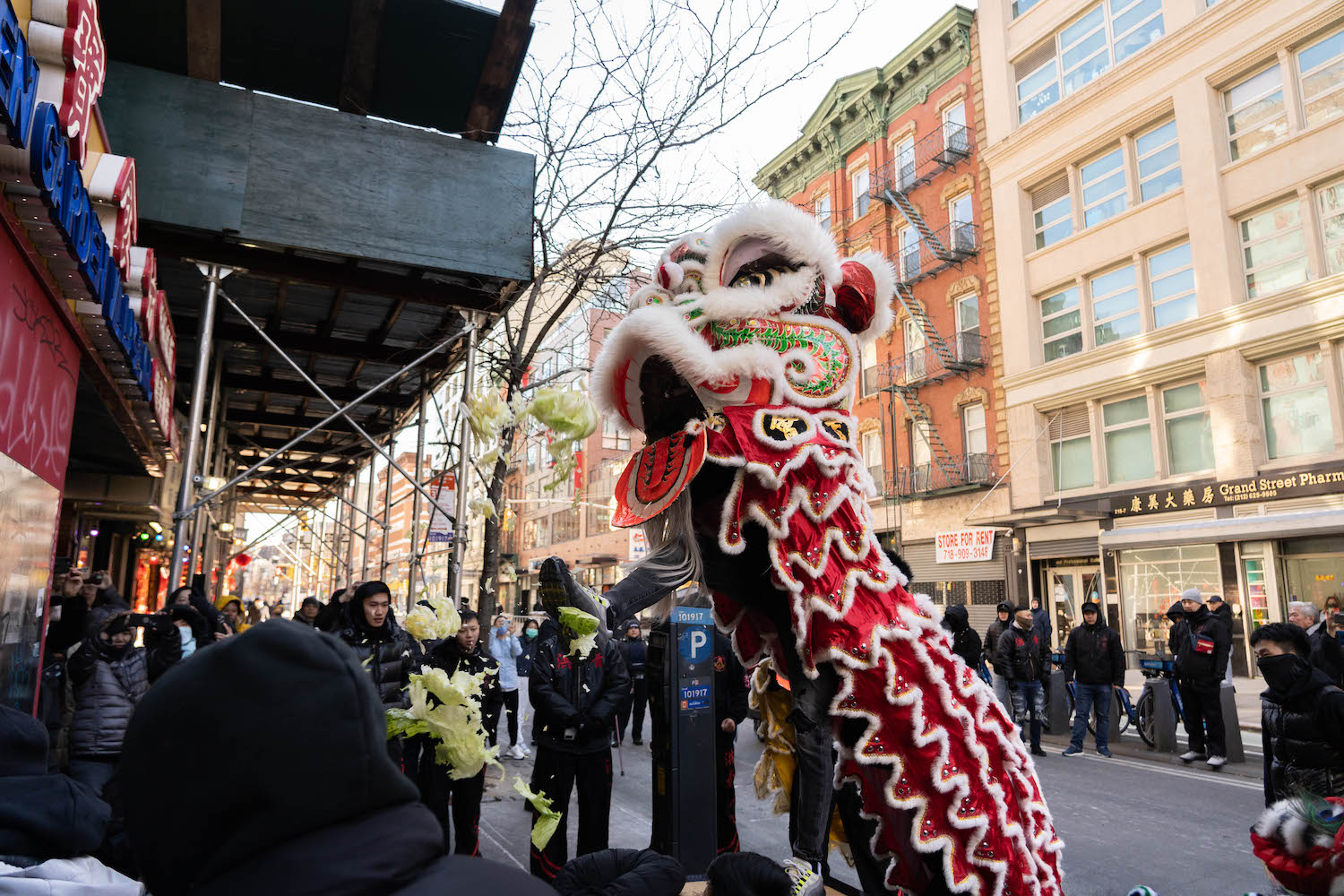
Choreography in lion dancing is largely based on Chinese martial arts. To be a successful lion dancer, one needs to be a competent martial artist first.
“When I first started, you learn all the basics, the Kung Fu, they teach you all the martial arts stances,” said Kyle Lai, a lion dancer at the Chinese Freemasons Athletics Club. “When you get better, they let you play the head.”
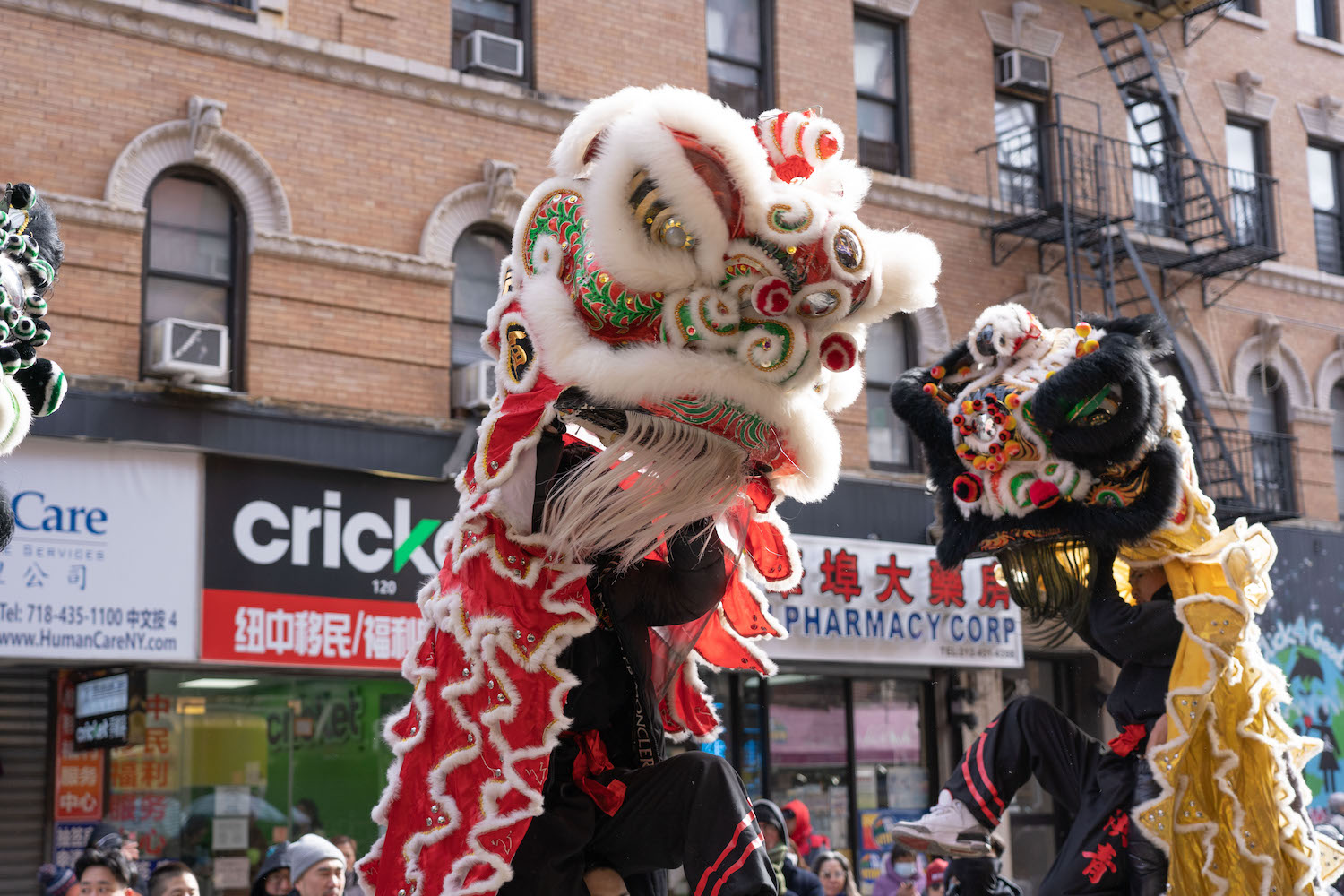

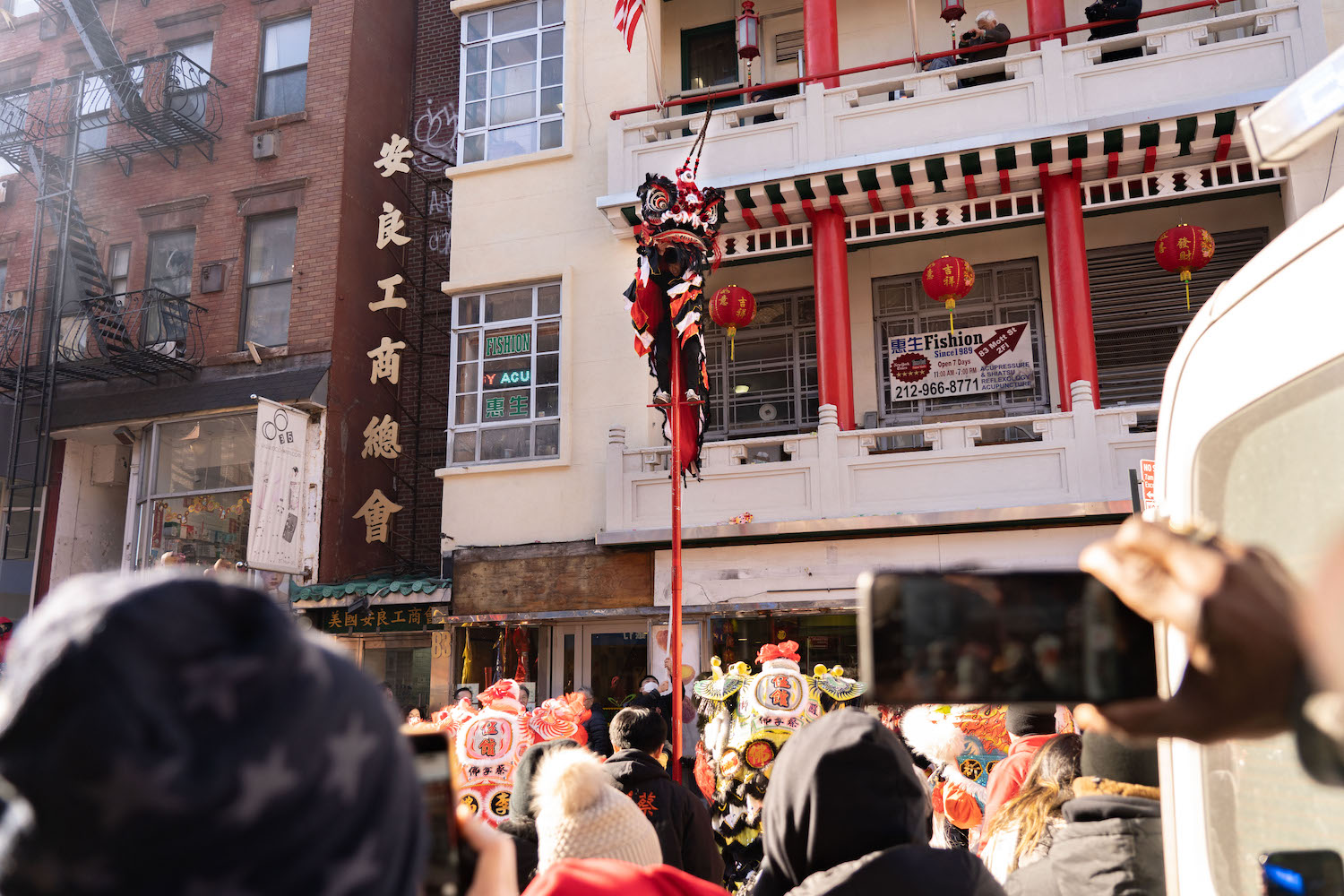
“A lot of people who are born here, they know lion dancing, they see it, but they don’t know what it needs or what you need to go through,” said Bill Wong, a lion dancer at the Chinese Freemasons Athletics Club for more than 30 years. “It’s a rigorous process — it’s like a three-year process for people. ”
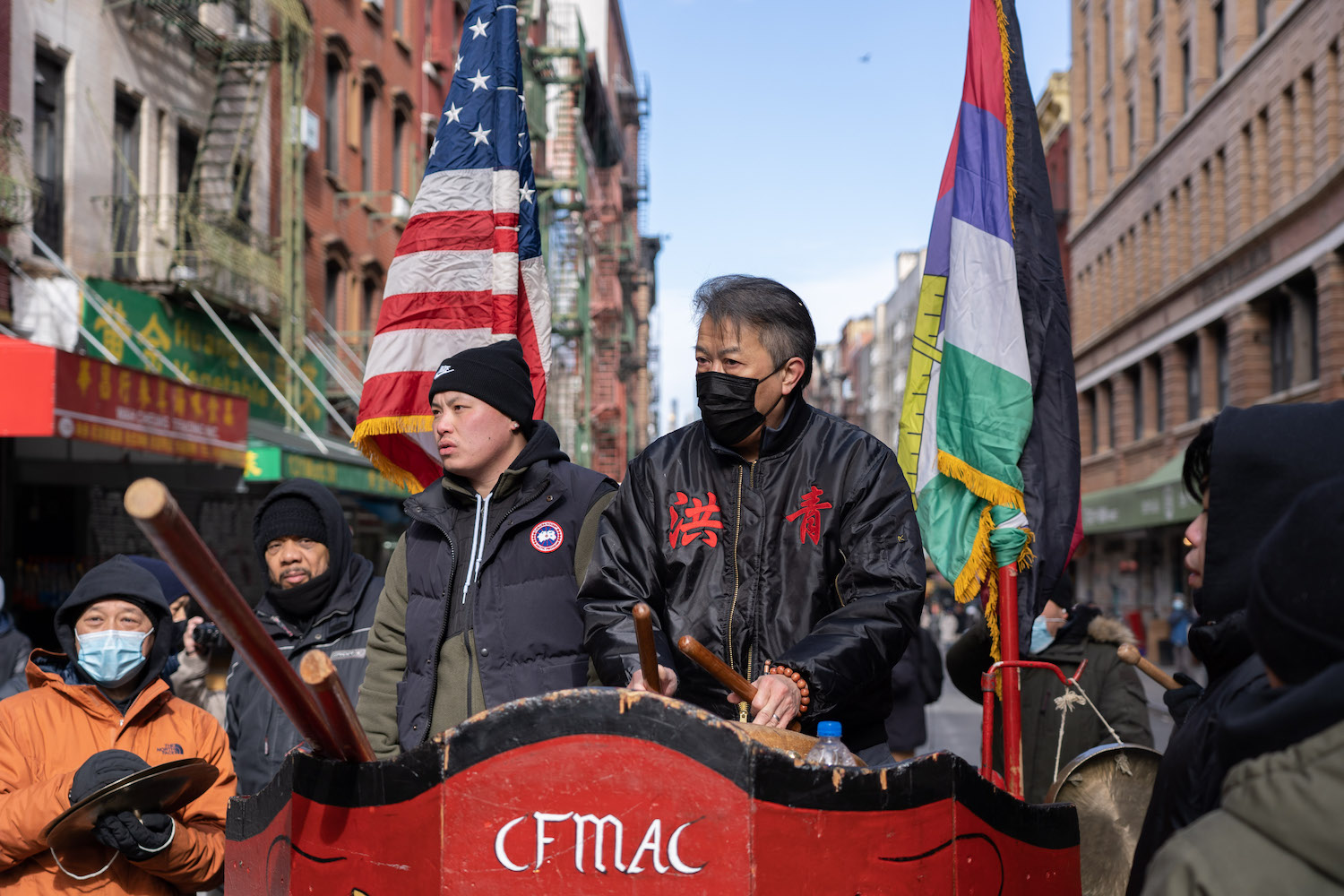
Despite the cold weather, the lion dance performances managed to attract a large crowd on the streets, tourists and community members alike. People applauded the moves of lion dancers, taking pictures with the lion costumes and petting them after offering a red packet.
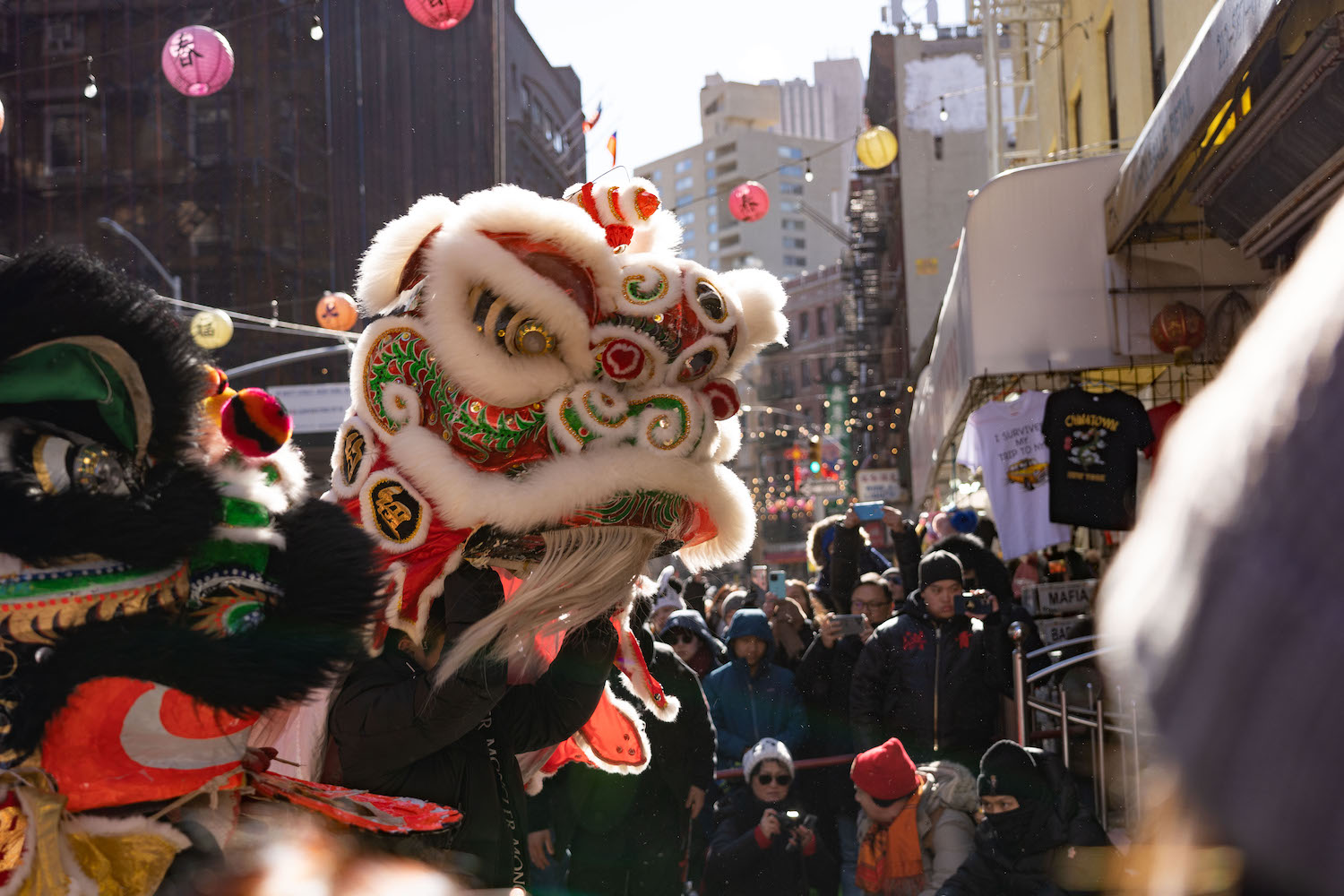

Lion dances accompanied the earliest Chinese immigrants as they traveled and found roots in New York. For some residents of Chinatown, the dancing of the lions is a sign of the community coming together, overcoming challenges, and working toward a brighter future.
“It’s a way of reinstating the faith and hope that we have in being together, in celebration and ritual, in holding on to the traditions that we hold on to as a Chinatown,” said Gary Lum, whose family owns Wing on Wo & Co, one of the oldest stores in Chinatown. “I have been here for 68 years, so I hold that in my heart. This memory of this ritual, this tradition, the celebration is in my heart. It grounds me, the drumming grounds me, it awakens an energy in me to continue on.”

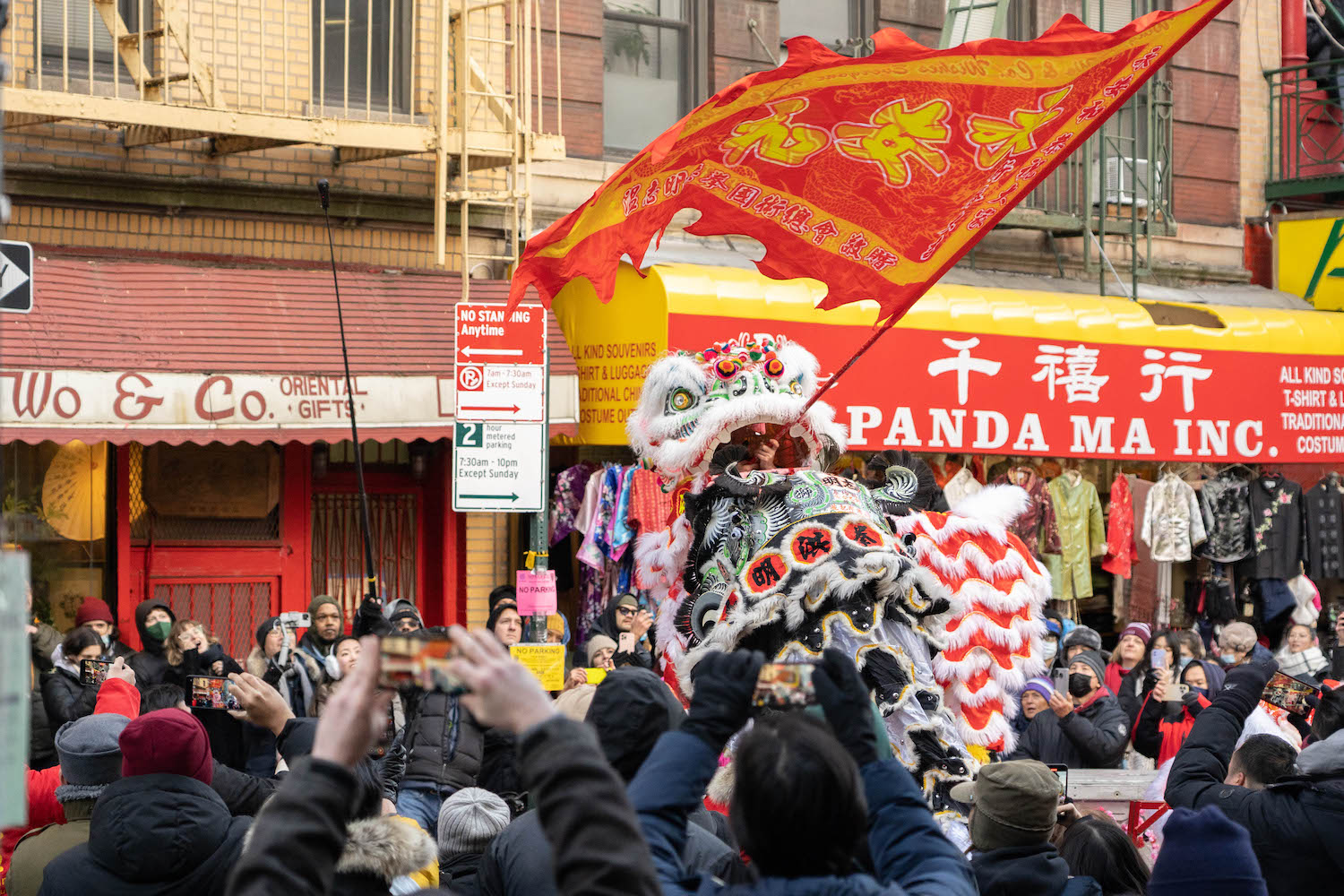
Contact Qianshan Weng at [email protected]
Developed for Web by Jason Alpert-Wisnia
